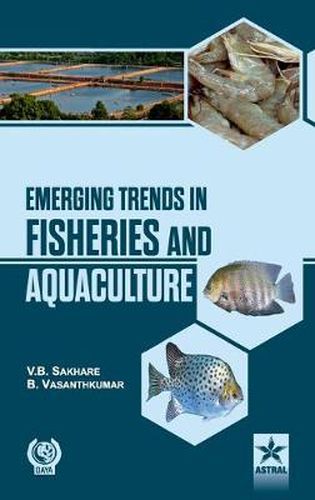Readings Newsletter
Become a Readings Member to make your shopping experience even easier.
Sign in or sign up for free!
You’re not far away from qualifying for FREE standard shipping within Australia
You’ve qualified for FREE standard shipping within Australia
The cart is loading…






This title is printed to order. This book may have been self-published. If so, we cannot guarantee the quality of the content. In the main most books will have gone through the editing process however some may not. We therefore suggest that you be aware of this before ordering this book. If in doubt check either the author or publisher’s details as we are unable to accept any returns unless they are faulty. Please contact us if you have any questions.
Indian fisheries and aquaculture is an important sector of food production, providing nutritional security to the food basket, contributing to the agriculturalexports and engaging about fourteen million people in different activities. With diverse resources ranging from deep seas to lakes in the mountains and more than 10 per cent of the global biodiversity in terms of fish and shellfish species, the country has shown continuous and sustained increments in fish production since independence. Constituting about 4.4 per cent of the global fish production, the sector contributes to 1.1 per cent of the GDP and 4.7 per cent of the agricultural GDP. India has a coastline of about 8,129 km, 0.506 million sq. km of continental shelf and 2.02 million sq. km of exclusive economic zone. India is a major fish producer and ranks third in fisheries and second in the world aquaculture. This volume is a proceedings of National Conference on Emerging Trends in Fisheries and Aquaculture (ETFA-2012),organized by Post Graduate Department of Zoology, Yogeshwari Mahavidyalaya, Ambajogai (Maharashtra) during 27th-28th September, 2012. This volume presents a compilation of papers presented in the conference, addresses the issues, highlights the present constraints in the development and proposes strategies for advancement of this sector. This volume will be highly useful to planners, policy makers, scientists, fishery managers, environmentalists and those to who are directly and indirectly involved in the development and management of fisheries and aquaculture. It is hoped that the contents of this volume would provide a new orientation and impetus to fisheries development in India and offer better inputs for scientific management and utilization of the resources on a long-term sustainable basis, contributing to food security, economic viability of operations, ecological and environmental safety.
$9.00 standard shipping within Australia
FREE standard shipping within Australia for orders over $100.00
Express & International shipping calculated at checkout
This title is printed to order. This book may have been self-published. If so, we cannot guarantee the quality of the content. In the main most books will have gone through the editing process however some may not. We therefore suggest that you be aware of this before ordering this book. If in doubt check either the author or publisher’s details as we are unable to accept any returns unless they are faulty. Please contact us if you have any questions.
Indian fisheries and aquaculture is an important sector of food production, providing nutritional security to the food basket, contributing to the agriculturalexports and engaging about fourteen million people in different activities. With diverse resources ranging from deep seas to lakes in the mountains and more than 10 per cent of the global biodiversity in terms of fish and shellfish species, the country has shown continuous and sustained increments in fish production since independence. Constituting about 4.4 per cent of the global fish production, the sector contributes to 1.1 per cent of the GDP and 4.7 per cent of the agricultural GDP. India has a coastline of about 8,129 km, 0.506 million sq. km of continental shelf and 2.02 million sq. km of exclusive economic zone. India is a major fish producer and ranks third in fisheries and second in the world aquaculture. This volume is a proceedings of National Conference on Emerging Trends in Fisheries and Aquaculture (ETFA-2012),organized by Post Graduate Department of Zoology, Yogeshwari Mahavidyalaya, Ambajogai (Maharashtra) during 27th-28th September, 2012. This volume presents a compilation of papers presented in the conference, addresses the issues, highlights the present constraints in the development and proposes strategies for advancement of this sector. This volume will be highly useful to planners, policy makers, scientists, fishery managers, environmentalists and those to who are directly and indirectly involved in the development and management of fisheries and aquaculture. It is hoped that the contents of this volume would provide a new orientation and impetus to fisheries development in India and offer better inputs for scientific management and utilization of the resources on a long-term sustainable basis, contributing to food security, economic viability of operations, ecological and environmental safety.